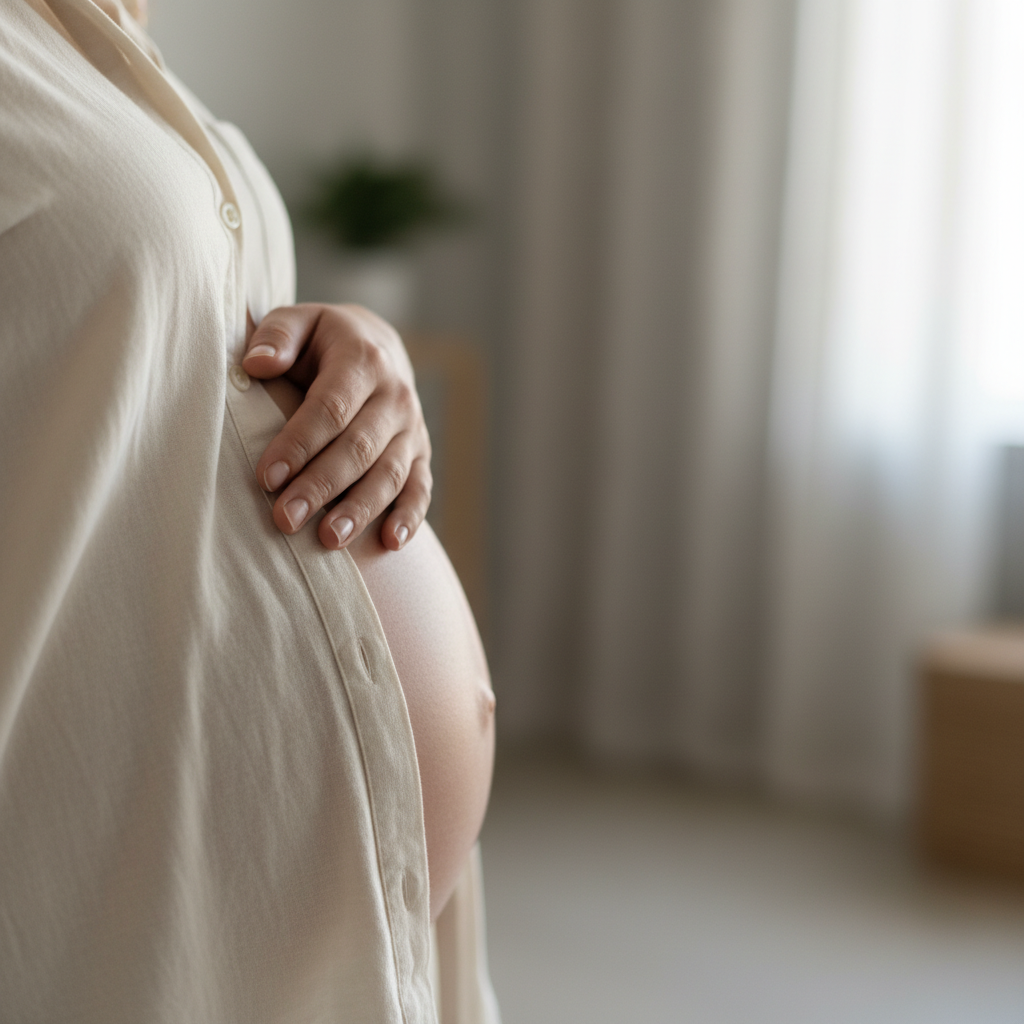
Baby’s Sleep Patterns Before Birth: A Hidden World of Development
Inside your womb, a fascinating process is unfolding as your baby develops sleep patterns long before birth. By late pregnancy, fetuses spend an astonishing 90-95% of their time sleeping, which plays a vital role in the healthy development of their brain and nervous system.
Key Highlights
Here’s what happens during your baby’s sleep journey in the womb:
- Sleep-wake cycles begin to emerge around the seventh month of pregnancy
- By late pregnancy, babies spend up to 95% of their time in various sleep states
- REM sleep (associated with dreaming) starts around weeks 28-29
- Four distinct behavioral states develop after 32 weeks
- Your sleep position and routines can influence your baby’s sleep patterns
Understanding Changes: When Sleep Patterns Begin

During the second trimester, your baby’s brain begins developing the structures necessary for regulating sleep. Before 11 weeks, fetuses exist in an almost constant sleep state as their neural pathways are just beginning to form. As pregnancy progresses, brain cells specifically dedicated to sleep regulation develop, allowing for more organized patterns to emerge.
By weeks 20-24, researchers can detect the first signs of cycling between active and quiet states, though these aren’t yet fully developed sleep cycles. This period marks an important transition as your baby’s brain matures enough to begin distinguishing between different states of consciousness. According to Johns Hopkins Medicine, these early sleep patterns are crucial indicators of healthy brain development and neurological functioning.
Understanding Changes: Types of Fetal Sleep
As your baby continues developing, their sleep becomes more complex and organized. Around 32 weeks, four distinct behavioral states become identifiable: quiet sleep, active sleep, quiet awake, and active awake. During quiet sleep, your baby remains still with steady heart rate and breathing movements, similar to deep sleep in adults.
Active sleep, comparable to REM sleep, involves more movement, irregular breathing, and fluctuating heart rates. This is when your baby might be most active inside the womb, practicing movements and possibly experiencing something similar to dreams. The American Academy of Pediatrics notes that these different sleep states help prepare your baby’s brain for the more complex sleep cycles they’ll experience after birth. These patterns continue to mature throughout the final weeks of pregnancy.
Your Body & Baby: Sleep and Brain Development

Sleep serves as a critical time for your baby’s brain development, with neurons forming at what researchers describe as a “supersonic rate” during these restful periods. During sleep, your baby’s brain processes the sensory information it receives from the womb environment, helping to strengthen neural pathways. The 2nd trimester marks a particularly important period when sleep states begin to organize and support this rapid development.
Your baby’s brain uses sleep time to form millions of connections that will be essential for everything from basic bodily functions to more complex cognitive abilities. Studies from the Journal of Physiology suggest that proper fetal sleep patterns are strongly associated with healthy brain development. When your baby sleeps in the womb, they’re not just resting but actively building the foundation for future learning and development.
Your Body & Baby: REM Sleep and the Possibility of Dreams
One of the most fascinating aspects of fetal sleep is the emergence of REM (Rapid Eye Movement) sleep around weeks 28-29. During REM sleep, your baby’s eyes move rapidly beneath their eyelids, just as yours do when you dream. This type of sleep increases in the final weeks of pregnancy, accounting for a significant portion of your baby’s sleep time.
While scientists cannot definitively confirm whether fetuses dream, the presence of REM sleep suggests the possibility of some form of dream-like neural activity. What might these first “dreams” be like? They likely wouldn’t resemble adult dreams but might involve processing sensory information like the sound of your voice, the rhythm of your heartbeat, or the gentle rocking motion as you move. These early experiences during REM sleep help strengthen the neural pathways that will support your baby’s sensory development and emotional regulation after birth.
Healthy Living Tips: Supporting Your Baby’s Sleep

Your sleep position and quality can have a notable impact on your baby’s sleep states. Research from the Journal of Obstetrics and Gynaecology suggests that sleeping on your left side (left lateral position) provides optimal blood flow to the placenta, supporting healthy sleep cycles for your baby. This position may be particularly beneficial during the later stages of pregnancy when your growing uterus puts pressure on major blood vessels.
Women experiencing pregnancy headaches second trimester may find that improving sleep quality not only helps relieve their discomfort but potentially benefits their baby’s developing sleep patterns as well. Establishing a consistent sleep routine can help regulate your circadian rhythms, which in turn helps set your baby’s internal clock. Simple habits like going to bed at the same time each night, limiting screen time before sleep, and creating a restful environment can support both your well-being and your baby’s developing sleep patterns.
Healthy Living Tips: Understanding Your Baby’s Movements
The relationship between your baby’s sleep states and their movements offers valuable insights into their well-being. During active sleep, you’ll likely feel more kicks and movements as your baby exercises their developing muscles. Quiet periods often correspond to quiet sleep states when your baby is still. By the 2nd month pregnancy, you won’t feel these movements yet, but they’re already beginning on a microscopic scale.
Paying attention to your baby’s patterns can help you connect with them before birth and potentially alert you to any significant changes. Hiccups, which feel like rhythmic, repeated movements, are actually a normal part of fetal development and often occur during transitions between sleep states. Many healthcare providers recommend doing “kick counts” in the third trimester to become familiar with your baby’s typical patterns of activity and rest. This practice not only helps monitor your baby’s well-being but also strengthens the bond between you as you tune into their natural rhythms.
The Wonder of Your Baby’s First Healthy Habit
The sleep patterns your baby establishes in the womb represent their first healthy habit, one that will continue to evolve after birth. These early cycles are not just restful periods but active times of growth and development that prepare your baby for life outside the womb.
As you move through pregnancy, take comfort in knowing that each quiet moment and active period serves an important purpose in your baby’s development journey. The foundation being laid now through these sleep patterns will support your baby’s health and well-being long after they’re born.
